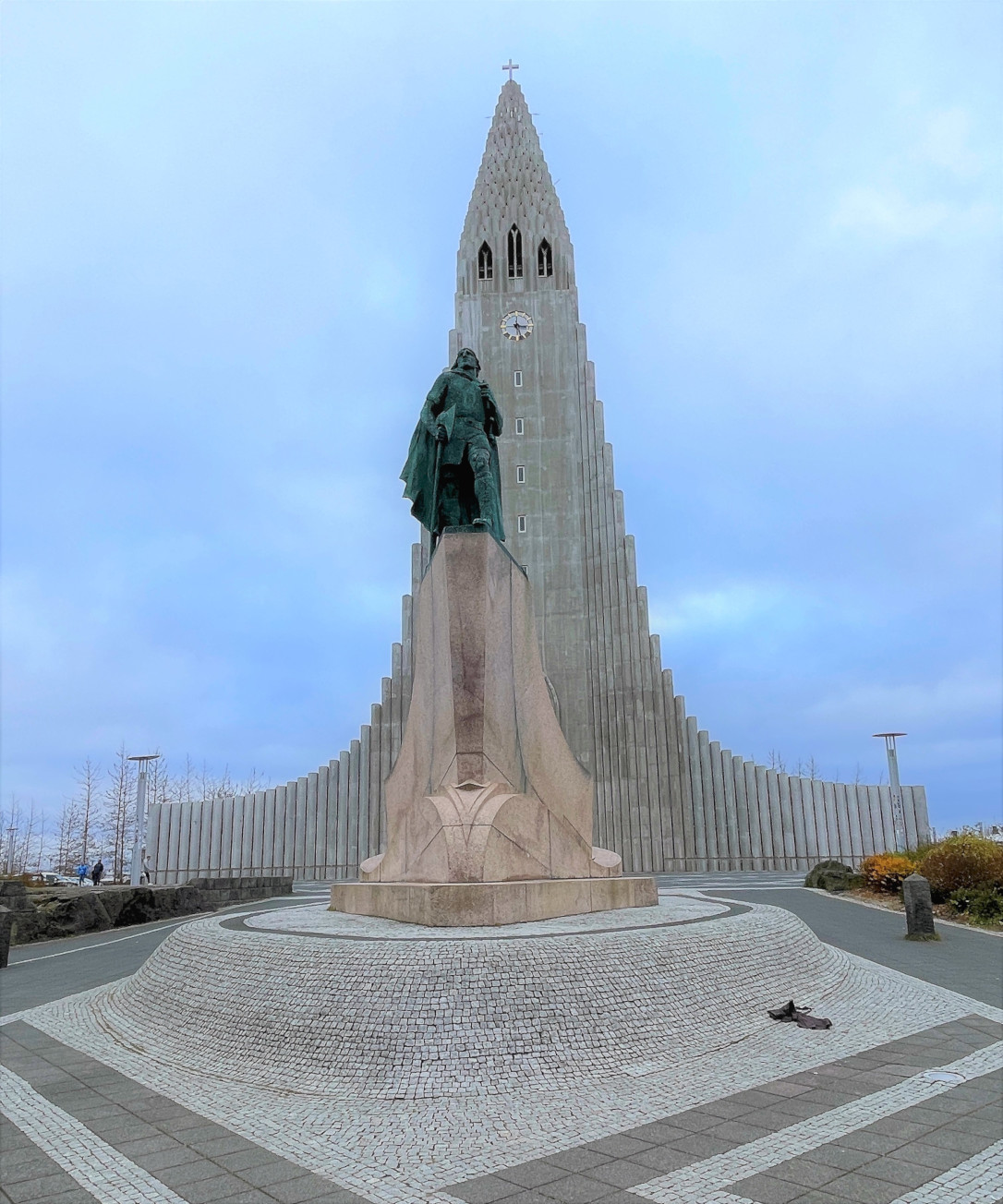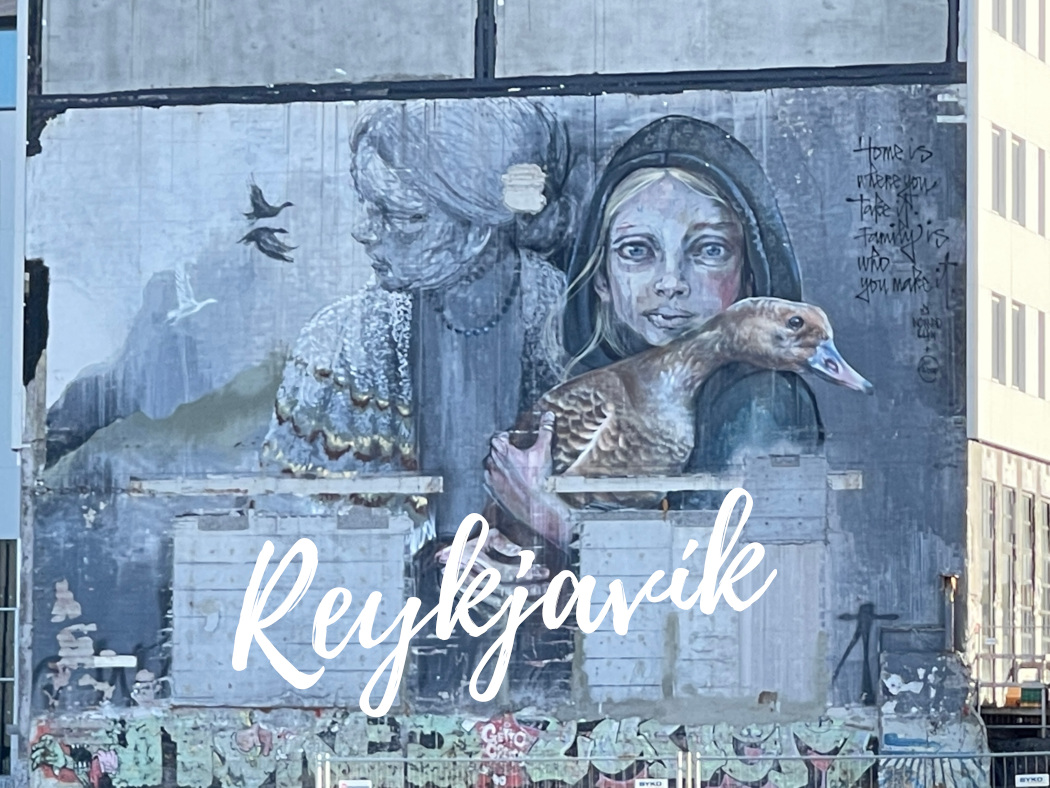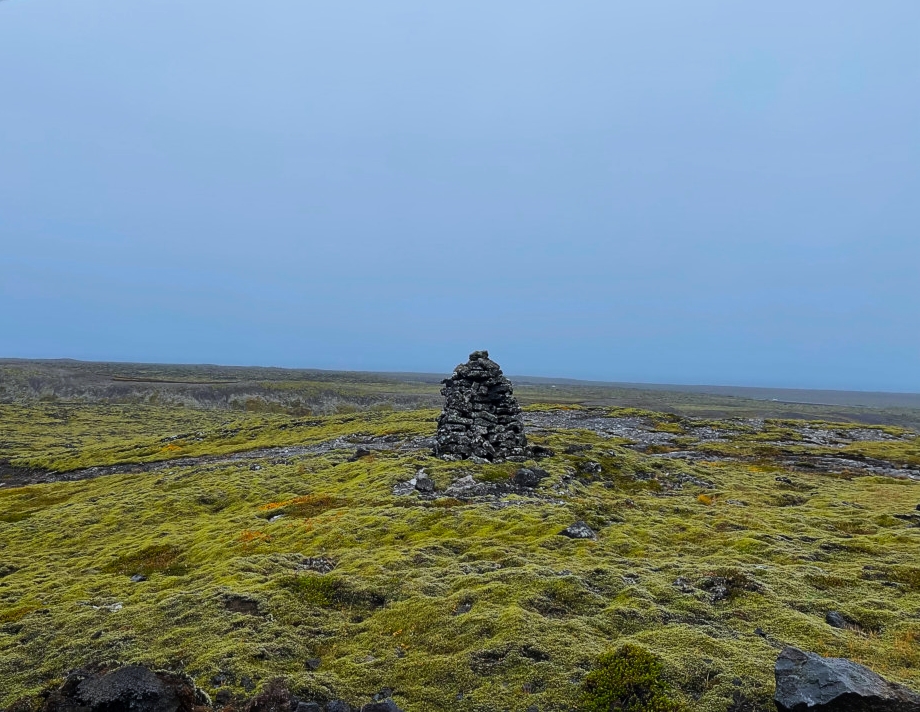Spirits can stick around in the same location regardless of structural changes to the area
 |
| On Austurstræti 8 is a vintage store called Gyllti Kötturinn (The Golden Cat). |
It may not come as a surprise to all that most of Reykjavik’s ghost stories are from the oldest part of town. The first street ever built in Reykjavík was Aðalstræti and then Hafnarstræti . Today’s story is about the third oldest street, Austurstræti.
With its first house in the year 1800, Austurstræti became the official third street. This house no longer stands, but was located on Austurstræti 4. The oldest house still standing is Austurstræti 20, which was built in 1805.
As one of Reykjavík’s oldest streets, many of the memories etched into its history are rarely talked about out, let alone remembered.
 |
| The oldest house that still remains on Austurstræti is Hressingarskálinn (Hressó) on Austurstræti 20 which was built in 1805. Ævar Arnfjörð Bjarmason |
In 1860, Guðmundur Lambertsen (1834-1885) was a successful and known merchant. He owned a house on Austurstræti 8 which he used as a store, tailor shop, brewery and a bar. It was called Lambertsenhús (the Lambertsen House). His house was known to have ghostly activities.
 |
| Lambertsenhús or the tailor’s house in 1845 on what is now Austurstræti 8. It wasn’t until 1848 that the street got its name, Austurstræti (East Street), as it is east of Aðalstræti (Main Street). Before then, it went by the Danish names Tværgaden and Langefortov. Picture painted with watercolors and markers by Jón Helgason |
In 1874, one of the founders of Iceland’s first spiritist society and the Minister of Iceland (1909-1911), Björn Jónsson (1846-1912), established the paper Ísafold. Three years later, he added Ísafoldarprentsmiðja (Ísafold Printing Company) to his business. He was running his printing shop out of his home and it was getting crowded. It was time to expand and move into something bigger.
 |
| Björn Jónsson was the Minister of Iceland, a devout spiritist and the father of the Iceland’s first president, Sveinn Björnsson. See my posts (6) that mention him . Unknown |
In 1887, Björn found the new location for his business. Guðmundur Lambertsen had died the year before and his house was up for sale. Björn ceased the opportunity and purchased the house. It was to be the new location for his printing company, offices, book store and family home.
The Lambertsen House was too small for Björn’s needs, so he tore the Lambertsen House down and built a new one.
 |
| Austurstræti 8-10 is perhaps most known for housing Ísafoldarprentsmiðja (Ísafold Printing Company). Ísafold |
The tearing down of the old house and building a new one did not drive away the spirits. In fact, the otherworldly activities were quite frequent in this new building. It is worth pointing out that not only was Björn a devout spiritist and the Minister of Iceland, but he was also the father of Iceland’s first president, Sveinn Björnsson (1881-1952). The house on Austurstræti was to become the future president’s childhood home.
 |
| Sveinn Björnsson, First president of the Republic of Iceland. He served as president from 1944 to 1952. He also served as Grandmaster of the Icelandic Order of Freemasons. See my posts (2) that mention him . Forseti.is |
The bank director, Jens Waage (1873-1938), who went on to marry the spiritist Eufemía Indriðadóttir (1881-1960). She was the daughter of the spiritist Indriði Einarsson. You can read more about him in my blogs (2) here . He was Indriði Indriðason’s cousin, Iceland’s first medium. Read about him in my blogs (4) here .
Jens had his share of ghostly experiences in the building. One of those experiences was the annual poker game.
 |
| Jens Waage was a bank director and an actor. Magnús Ólafsson |
Every New Year’s Eve, the Ísafold building was quite a lively one. Two spirit-beings would sit down together and play poker. The game was usually quite noisy and people could heard the clinking coins and the laughter. One of the laughs was loud and distinct.
It was clear to those who heard it that it was Sigmundur Guðmundsson’s (1853-1898) laugh. He was the head printer. The other poker player was Guðmundur Lambertsen, the former owner of the Lambertsen House.
 |
| Guðmundur Lambertsen was the owner of Lambertsen House and one of the poker players Jens Waage saw. He died from pneumonia at the age of 50. He was considered highly intelligent and knowledgeable in many traits. Sólveig Eymundsson |
Sigmundur Guðmundsson (1854-1898) was a printer and a vital part of Ísafold’s success. He was an intelligent man who loved a good time. He was highly educated, fluent in four languages and a genius in the printing business. In fact, he was considered the best in the country.
In 1879, during a visit in England, he purchased a speed-press and brought it to Iceland on the mail ship Phoenix. This made Ísafold the first company in Iceland to use a speed-press. They were now able to print 600 newspapers in one hour.
The press was first located at Bankastræti 3, a house you can read about in my blog here . Sigmundur was Ísafold’s main printer from its very first day of business until in 1883 when he decided to start his own printing company. Sigmundur became very sick and at the young age of 44, his body succumbed to Tuberculosis.
 |
| Sigmundur Guðmundsson was the other poker player who Jens Waage saw. Ísafold |
All ghostly activities in the house couldn’t be blamed on the two poker players. Like the poker players, some of the spirits were more recent and tied to the printing company.
Late one evening, Guðmundur Þorláksson (1926-1988), one of the paper’s employees, walked towards the printing room with a letter in hand. The printing room was closed, so he opened the letter slot and pushed the letter through.
 |
| Guðmundur Þorláksson. Morgunblaðið |
While Guðmundur had his hand inside the letter opening on the door, he felt a large furry hand touch him from the inside of the printing room. Terrified, he jerked his hand away and took off running. He ran into the room where his coworkers sat around a table.
Guðmundur was white as sheet and looked like he had just had the living daylight scared out of him. Guðmundur manage to pull himself together and tell his coworkers about the furry hand.
After describing it in detail, his coworkers knew exactly who he had encountered. It was a woman he used to work there. She died earlier that winter.
 |
| Björn had the Lambertsen House torn down in 1886 and built a larger house that could fit the printing shop, office, book store and his family home. Ísafold |
The spirits who had been there from the days of Lambertsen House were still watching over the people living there. Inside the shop was a ladder to the second floor. The ladder also served as a door to the basement. In order to keep the basement open, the ladder had to be leaned up against the wall.
There was a hook on the wall to keep the ladder from moving. The basement was in use all day long, so the ladder was hooked up against the wall most of the day.
 |
| One of the ways the ghosts would make themselves known was to pick up the large printing letters out of their boxes and throw them on to the floor with a loud bang. Photo from 1906. Prentsögusetur |
Although it was convenient to keep the basement open, it could also be hazardous. On several occasions, they would forget to put the ladder back at the end of the day. After dark people would accidentally fall down into the basement. As painful as the fall was, nobody ever got seriously injured. This didn’t surprise anyone, as they knew there was a guardian spirit looking out for them.
 |
| Austurstræti looking westward. Ísafold Printing Shop is the first house on the left. Magnús Ólafsson 1862-1937 |
There was something else there too, something unclean. All day long, the men would climb the ladder to get from the typing hall to the offices. The spirits seemed to know they were in a rush, because every time the men hurried up the ladder, they were slowed down by the spirits pulling on their legs. It was only luck that nobody fell when this happened.
 |
| The printing shop is in the center of the photograph. The bottom left corner is Austurvöllur. Magnús Ólafsson |
Björn wanted to know what was going on and invited a clairvoyant woman to come take a look. When the woman got to the house, she looked under the ladder and was startled. She saw an awful spirit-being crouching under the ladder. It looked so awful she couldn’t even begin to describe it. It barely looked human.
The crouching distorted looking spirit enjoyed having fun with the workers. The clairvoyant lady explained that the spirit would spit between the ladder and the men’s feet when they were rushing up it. This extracted energy from them. The clairvoyant lady didn’t know what kind of spirit this was, but it would be a good thing to pray for it. After the visit, the pulling on the men’s leg in the ladder ceased.
 |
| Austurstræti looking eastward. The Governor’s Office that used to be the jail (see previous post) is the larger white building on the left. The printing shop is the large building in the center. Þjóðminjasafn Íslands |
The men were later told that this scary being used to be in the old Lambertsen House (Tailor’s house). Nobody at Ísafold showed any fear of these otherworldly activities or was afraid of the dark. They all felt there were guardian spirits in the house looking out for them.
 |
| The Printing Shop to the left as seen from Austurvöllur. William Gersholm Collingwood 1854-1932 |
As if these activities weren’t enough, these ghosts were relentlessly mischievous and didn’t seem empty for ideas. One evening, Iceland’s first official medium, Indriði Indriðason came to visit Björn in his office. He brought his friend and fellow spiritist, Brynjólfur Þorláksson (1867-1950) with him.
Björn invited them inside to sit down and brought them apples to eat. Brynjólfur held a delicious apple in his hand and was about sink his teeth into it when all of a sudden, the apple flew out of his hand and on to the wall where it smashed open with a bang. Björn had only one response to this: yes, yes! This is how it is .
Today, Austurstræti 8 is a vintage store called Gyllti Kötturinn (The Golden Cat). On their website, the owners have written a heart warming and welcoming introduction to their store. Among the things they wrote was:
This desire to bring something back to life again and again gives power to present, by not allowing the past to fade into oblivion.
The owners of Gyllti Kötturinn have a spirit girl appear on the stairs inside the store. The girl is harmlessly mischievous. She spends a lot of time down in the basement of the store. She’s young, but although they have tried, the owners haven’t been able to figure out where or when she’s from.
| |
| The American Bar restaurant is next door to Gyllti Kötturinn. |
The girl appears to be 10 years old or younger. She has long black hair and looks to be from a different era judging by her clothes. By the looks of it she’s not from Iceland. She probably arrived there wearing her favorite clothes. She wears felt shoes and a brownish dress with a laced collar. Her skirt is wide, like the skirts from the 40’s.
The girl communicates with the owners by hiding things. She doesn’t like how messy it is, so she’ll throw the clothes into a corner. The owners take this as a hint that they need to clean up the area. The girls is a pleasant addition to their store and she carries with her good energy.
One time, the owner, Hafdís Þorláksdóttir’s skeptic-by-nature sister came by the store. While they were chatting and eating cake, she decided to tell her skeptical sister about the spirit-girl. As expected, the sister told her how ridiculous she was. Obviously this was just all in her imagination. Just as soon as she had said that, her cake flew out of her hand.




